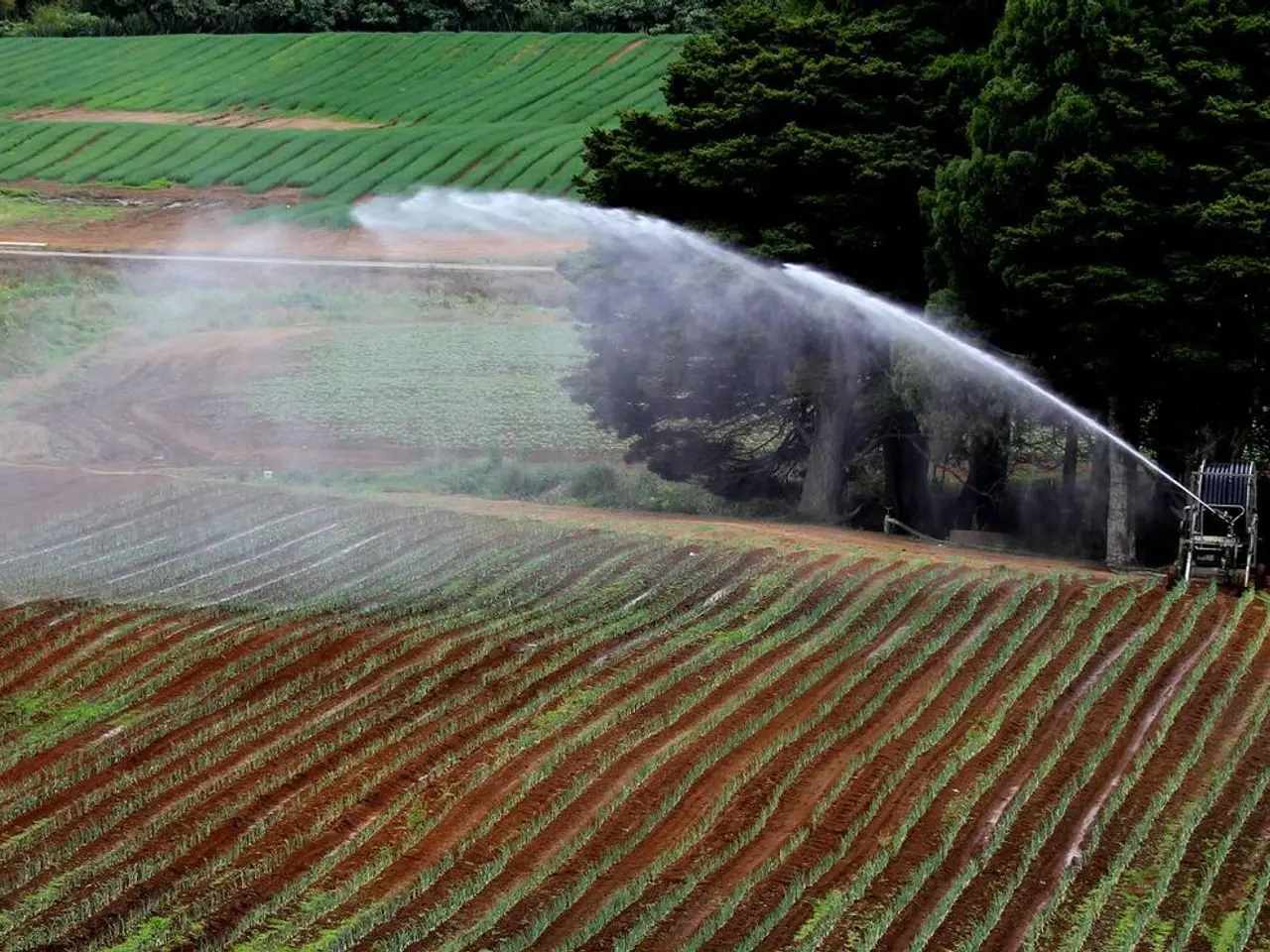Utilizing Sensor-based Agricultural Systems for Farming Productivity Enhancement
In the rapidly evolving world of farming, sensor-driven systems and IoT technology are playing a pivotal role in transforming the industry. These innovative tools are not only saving water and reducing costs but also increasing yields and improving soil health, thereby promoting sustainable practices.
One of the key benefits of these systems is precision irrigation. By providing precise soil moisture readings, farmers can optimise their irrigation schedules, leading to a 20-30% increase in crop yields while reducing water usage by 40-60%. This not only conserves a valuable resource but also contributes to a more efficient and productive farming operation.
Another advantage is fertilizer optimization. By analysing soil nutrient levels through sensor data, farmers can apply fertilizers more efficiently, reducing waste and enhancing soil health. This could result in potential cost savings of 10-15% per acre.
The real-time data provided by these systems also enables farmers to make quick decisions for better harvests, saving time and resources. For instance, sensors can monitor soil health parameters such as pH, moisture, and nutrient levels in real-time, facilitating early detection of soil degradation or stress, enabling timely interventions.
Moreover, sensor-driven systems help in identifying areas of the field that require less fertilizer or water, leading to more efficient resource allocation and reduced environmental impact. This contributes to sustainable agriculture by promoting resource efficiency, reducing waste, and fostering environmentally friendly practices.
Advanced soil monitoring also helps in identifying areas vulnerable to erosion or degradation, allowing for targeted conservation efforts. Furthermore, by analysing historical climate data and real-time weather forecasts, farmers can adopt climate-resilient farming strategies, such as selecting drought-tolerant crops or implementing flood control measures.
The use of sensor data and analytics also enables farmers to make informed decisions about crop rotation, irrigation, and nutrient application, reducing the environmental footprint of farming operations. Additionally, the precision application of fertilizers and pesticides minimizes their use, contributing to cleaner waterways and healthier ecosystems.
IoT adoption in farming is leading to increased efficiency in resource use, making farming smarter. Automation helps reduce waste and conserve resources, making farming more environmentally friendly. IoT in farming allows for real-time data collection and remote monitoring of equipment, enabling farmers to make informed decisions from anywhere.
Automation in farming also promotes sustainable practices such as precision irrigation, automated planting, and pest control using drones. Sensors in agriculture are placed in the ground or around the farm and send data to a computer or smartphone, providing farmers with valuable insights about their crops and soil conditions.
By adopting data analytics, farmers can optimise their yields, making their farms more productive. Sensor-driven systems can detect moisture levels, pH balance, and nutrient content without needing to dig around, providing a non-invasive and efficient method for soil analysis.
In conclusion, sensor-driven systems for soil analysis in farming are essential for modern agriculture, enhancing productivity and promoting sustainable practices. These systems offer a range of benefits, from precision irrigation and fertilizer optimization to early detection of soil issues and resource efficiency. By embracing these technologies, farmers can make their operations more efficient, sustainable, and profitable.
- The integration of science and environmental-science in farming, such as data-and-cloud-computing and sensor-driven systems, is revolutionizing the industry, promoting sustainable practices and conserving resources.
- The foreseeable effect of these innovations includes a possible 10-15% cost reduction per acre due to fertilizer optimization, while also fostering sustainable living through reduced environmental impact.
- Furthermore, the home-and-garden sector may benefit from technological advancements in farming, as farmers increasingly implement climate-resilient strategies, such as cultivating drought-tolerant crops, thereby contributing to a sustainable lifestyle.
- In the realm of finance, these improvements in farming practices could potentially lead to increased productivity and profits for farmers in the long run, thanks to sensor-driven systems that optimize yields and resources.
- As these systems use technology to support sustainable agricultural practices, they also contribute positively to the environment by minimizing water usage, reducing waste, and lessening the environmental footprint of farming operations, thereby ensuring a cleaner planet for future generations.




